As a homeowner, you understand that an amazing lawn doesn’t just happen. It takes a lot of nurturing, care, and ongoing work to achieve a lawn that is the envy of the neighborhood.
If you’re frustrated that your lawn isn’t as green as it should be or has areas where there are bare spots, you might have some lawn care questions that you’re looking to get answered. You may be wondering exactly what’s involved in achieving a great lawn.
That’s exactly why we’ve put together this lawn care guide.
Having a lawn that you’re proud of shouldn’t feel elusive. We want you to feel like you understand what’s involved with lawn care in Pennsylvania so that you can get the best results.
Table of Contents
Watering Your Lawn
Mowing the Lawn
How to Get Rid of Weeds
Fertilizing Your Lawn
How to Improve Lawn Soil
How to Get Rid of Lawn Pests
Dealing with Lawn Fungus
Lawn Aeration and Overseeding
Choosing a Lawn Care Service
Watering Your Lawn
Water is the lifeblood of all living things so it shouldn’t be surprising that in order for your lawn to thrive, it must be watered properly. While watering is one of those tasks that might seem like a no-brainer, there are some “right” and “wrong” approaches.
Here are a few lawn watering tips to implement.
Water in the Early Morning
Your lawn watering schedule is important. Unbeknownst to many, there is an “optimal time of day” to water the lawn.
But one of the biggest mistakes that homeowners make is watering at night. But the optimal time to water your lawn is actually just after the sun rises. At this time of day, it’s still cool and the water won’t evaporate quickly—but it still gives the grass blades plenty of time to dry before the sun sets.
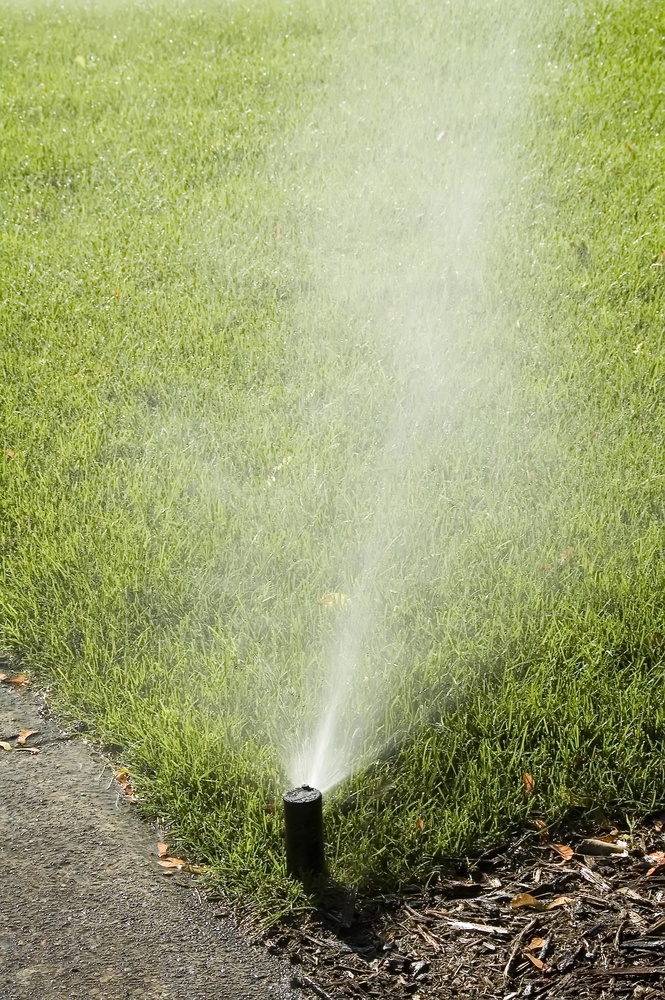
The trouble with watering at night is that you can create a breeding ground for lawn fungus, which can spread and damage your lawn.
If you can’t find time to water in the early morning, mid-day is also okay, though you may need to water for longer as you’ll lose a lot of it to evaporation. If you aren’t able to perform daytime watering at all, it might be worth considering an irrigation system or a sprinkler with a timer.
How Much to Water
Besides your lawn watering schedule, you also want to pay attention to how much you are watering. Lawns need approximately 1 to 2 inches of water each week in order to stay healthy and green.
The best way for lawns to receive that water is through a slow and soaking rain (either naturally or as a result of your sprinklers). Just be careful not to assume a downpour has given you ample water. Stick a finger down into the first few inches of soil and get a sense of how moist it is.
Water Proactively During Periods of Drought
With lawn care, being proactive is always better than being reactive. Fixing drought stress in grass is not always easy, depending on how bad it is. So, if you can take steps to prevent it in the first place, you’ll be much better off.

That’s why it’s important to be proactive with watering, particularly during periods of drought. Do not wait until your lawn looks in bad shape to water! At this point, it’s going to be too late to catch up.
We are fortunate that weather forecasting technology often allows us to know when drought conditions are coming and provide us with the chance to plan ahead. When you see 85-plus degree days and no call for rain, we’d encourage homeowners to plan to start extra irrigation—even if the lawn looks good.
Mowing the Lawn
Mowing is an important lawn care service that certainly seems simple enough. But a lot of homeowners fail to cut their lawn to the proper height. This can be problematic as a lawn that is too short can become a target for weeds.
Opportunistic weeds are much more prone to invade a lawn where they have easy access to sunlight and don’t have to compete with a lot of healthy turfgrass. To prevent this, the best mowing height is approximately 3.5 inches to help your grass to grow to its full potential.
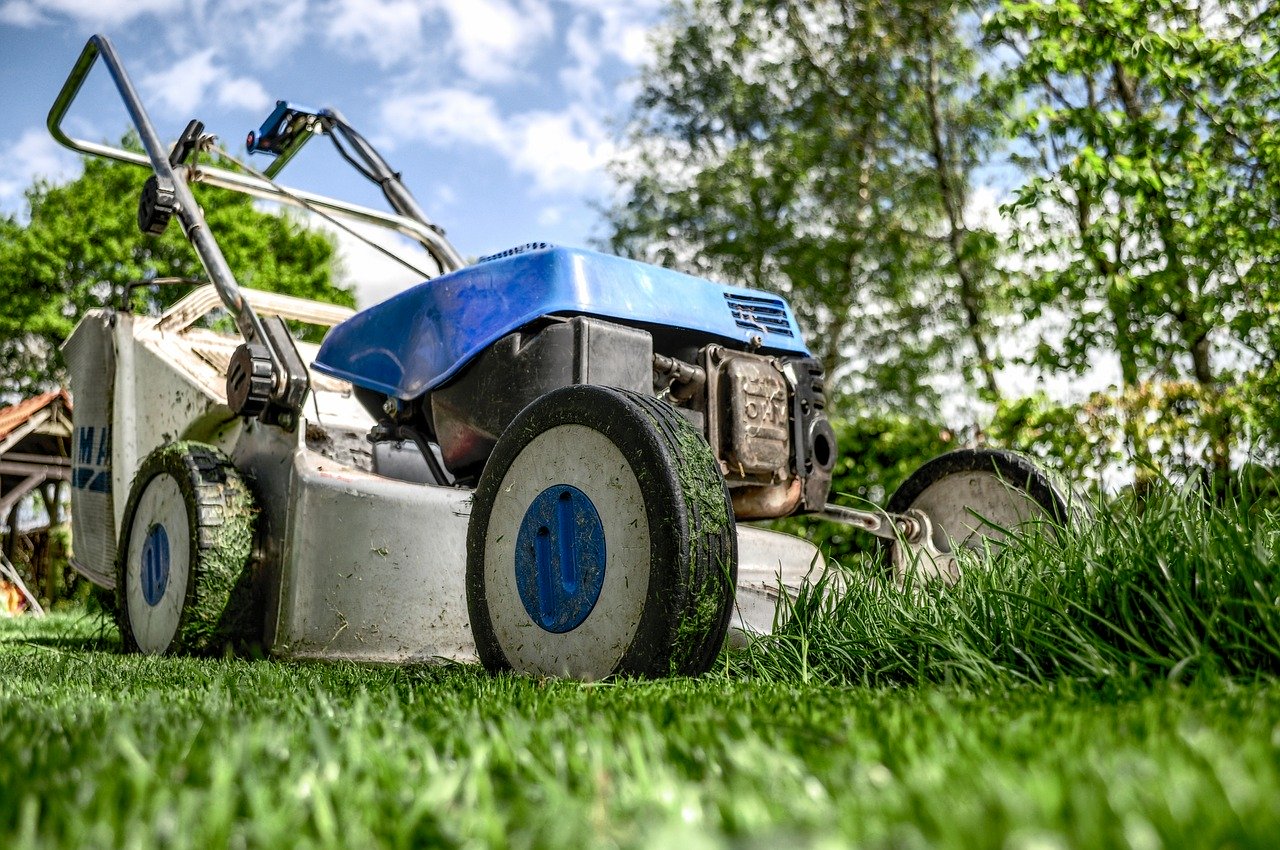
Here are a few additional lawn mowing tips that will help you to improve your mowing habits.
- Mow Often: It’s better to mow your lawn weekly than bi-weekly. Even though it can be hard to keep up with, when you mow more often, you put less stress on the lawn. Your goal should be to cut no more than one-third of the grass blade at a time so that you aren’t putting unnecessary amounts of stress on the lawn. If your lawn grows fast, you might even need to mow twice a week to achieve this goal.
- Maintain your Equipment: The quality of your mowing equipment will also impact the cut. To get a crisp and level cut, you need to mow with a sharp blade and a level mower deck. You also want to have evenly inflated tires. We also recommend using a mulching blade and returning your grass clippings to the lawn. This provides some natural compost and creates a healthier lawn.
- Change your Mowing Patterns: When you change your mowing direction each time that you mow, you will avoid leaving ruts with the wheels. This promotes a healthier looking lawn.
- Mow at the Right Time: Most lawn professionals will agree that mid-morning is the best time to mow a lawn. This is great news for your family and neighbors, who may not appreciate your 7 a.m. Saturday lawn mower wake up calls! By mid-morning, most of the dew has evaporated from the grass blades, which means your grass has the remainder of the day to “heal” and that makes it less susceptible to fungus and other diseases.
How to Get Rid of Weeds
Getting rid of weeds is a very important part of this lawn care guide. When it comes to having that healthy and thriving lawn you're proud to show off, weeds are a major source of frustration. You likely want to know how to get rid of weeds.
It all starts with proper lawn weeds identification. You have to know what you’re dealing with before you can implement a solution.
Here we’ll talk about some common lawn weeds and how to deal with them.
Common Lawn Weeds
While not an exhaustive list, these are some of the more common lawn weeds.
- Crabgrass: This grassy weed is both aggressive and difficult to control and grows in unsightly clumps, spreading to take over large areas of lawns.
- White Clover: This member of the legume family is a perennial weed that can make a groomed lawn look “messy.” Due to its ability to spread quickly, white clover can take over a lawn seemingly overnight.
- Oxalis: This low-growing lawn weed is often mistaken for clover because of its green, heart-shaped leaves, which turn to a burgundy color later in summer. This perennial produces yellow flowers and can thrive in both shade or sun.
- Plantain: Broadleaf Plantain and Buckhorn Plantain are the two common types of plantain found in many lawns.
- Wild Violets: These low-growing broadleaf weeds are highly shade tolerant but can grow in sunny areas, too. Getting rid of wild violet is no simple task due to its aggressive nature.
- Nutsedge: This pesky grassy perennial prefers moist areas of the lawn and can grow rapidly in warm weather.
- Dandelion: This perennial weed is a common spring weed. Dandelions are both fast-growing and incredibly hardy. Even when conditions are not suitable for germination, the seeds can remain viable until growing conditions improve.
- Wild Onion Grass: This is a common weed that most people are familiar with. It grows in clumps and can “stick out” in your lawn. It’s a perennial weed that grows from an underground bulb and gives off an onion smell.
How to Kill Weeds in Your Lawn
Getting weeds under control may require a multi-faceted approach that includes the use of both pre- and post-emergent applications. It also requires a customized approach that will target difficult-to-control weeds.
Weeds like Nutsedge, for instance, do require specialty controls. And some weeds do require repeated controls due to their persistent nature. Even if you treat them, they’re going to keep coming back.
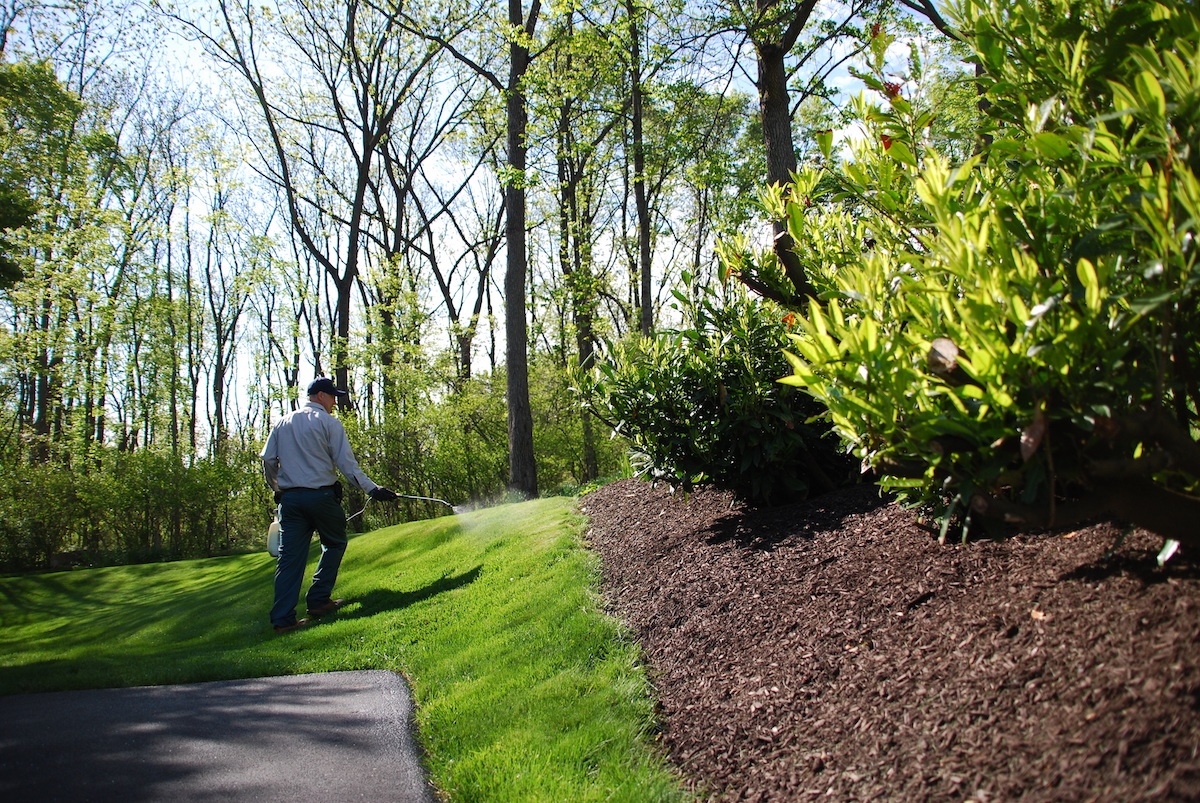
When thinking about how to kill weeds in your lawn, it’s easy to focus on weed control products. But it’s important to know that the most effective programs are focused on overall lawn health.
When your lawn is healthy, it’s going to be less likely for weeds to take over. Some of these other lawn care tips and tricks that we’re talking about in this guide will also ultimately help your weed control strategy, too.
Fertilizing Your Lawn
Implementing a lawn fertilizer service is also important when it comes to achieving great lawn care results. Lawn fertilization helps to add vital nutrients to the soil so that your lawn can perform its best.
Here are a few considerations regarding a lawn fertilizer service.
All Fertilizers are Not Created Equally
that we hear is that all fertilizers are essentially the same. But this isn’t the case. In fact, if you are comparing two different lawn care programs that both offer a lawn fertilizer service and one costs more, they might be using better products.
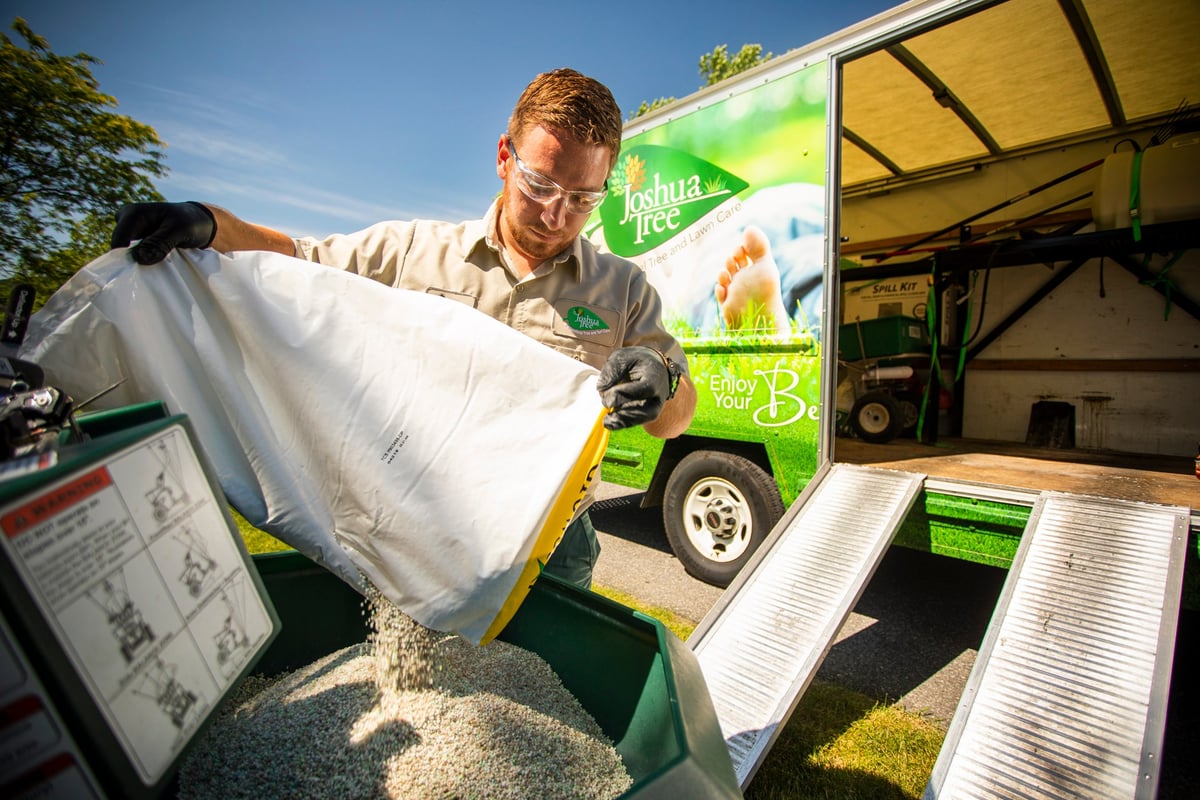
The best lawn fertilizer is naturally going to cost more than a subpar product. At Joshua Tree Experts, we also use biostimulant additives with our lawn fertilizing program.
Biostimulants are organic materials that, when applied in small quantities, enhance plant growth and development. This is an added benefit that gives you extra value out of your investment in a healthy, green lawn.
Following a Lawn Fertilizer Schedule
The timing of fertilizer applications also matters to make grass thicker and fuller, and of course, greener. Even if you purchase a high-quality fertilizer, if you apply it at the wrong time, it’s not going to do you much good. In fact, it could even cause harm.
There are times of the year, such as the summer, when the amount needs to be tapered off.
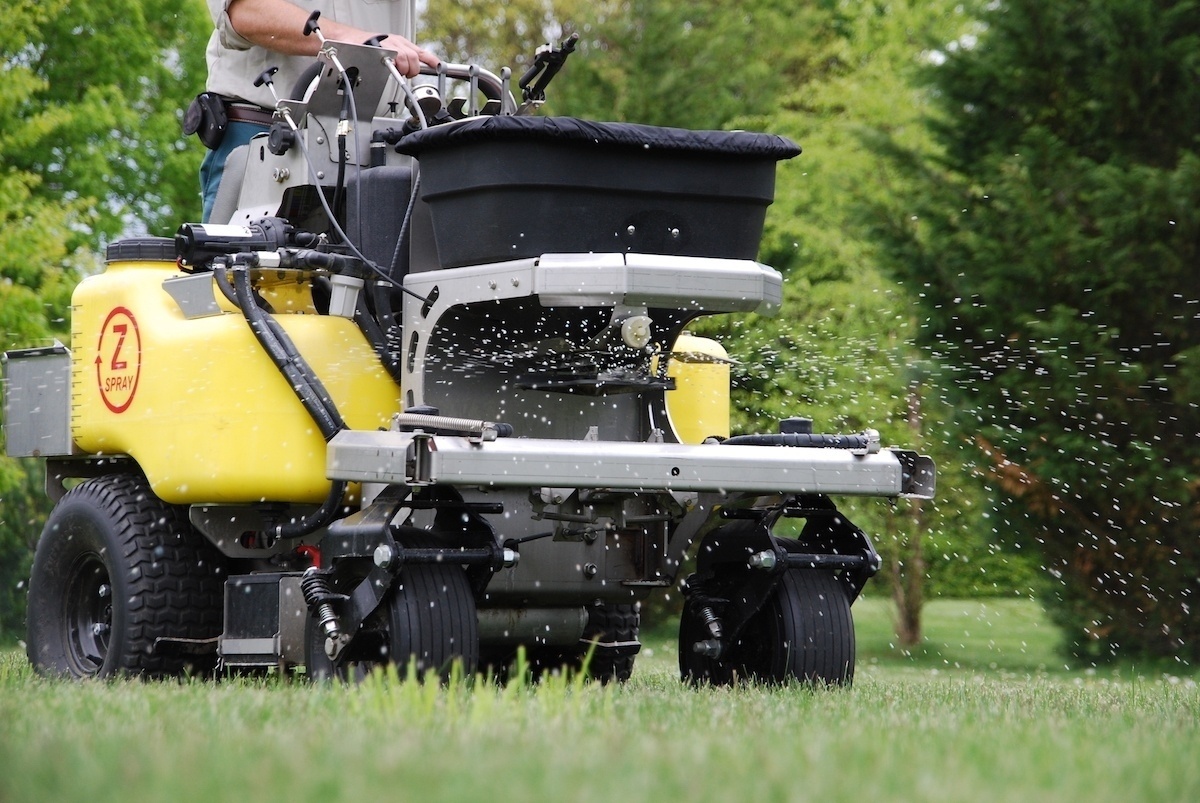
Of course, you shouldn’t get too caught up in the number of visits as it’s more about the rate of application. We understand this sometimes confuses people.
But you could deliver a lot of nutrients in a handful of visits or you could slowly fertilize over a longer period of time. It’s not about the number of visits but rather about the rate of application and the products being used.
How to Improve Lawn Soil
If your lawn constantly seems to be struggling and never appears to be making improvements, then you might have lawn soil problems that need to be addressed. But first, you have to figure out what’s going on.
Lawn Soil Testing
One of the best ways to figure out what’s going on with your soil health is with lawn soil testing.
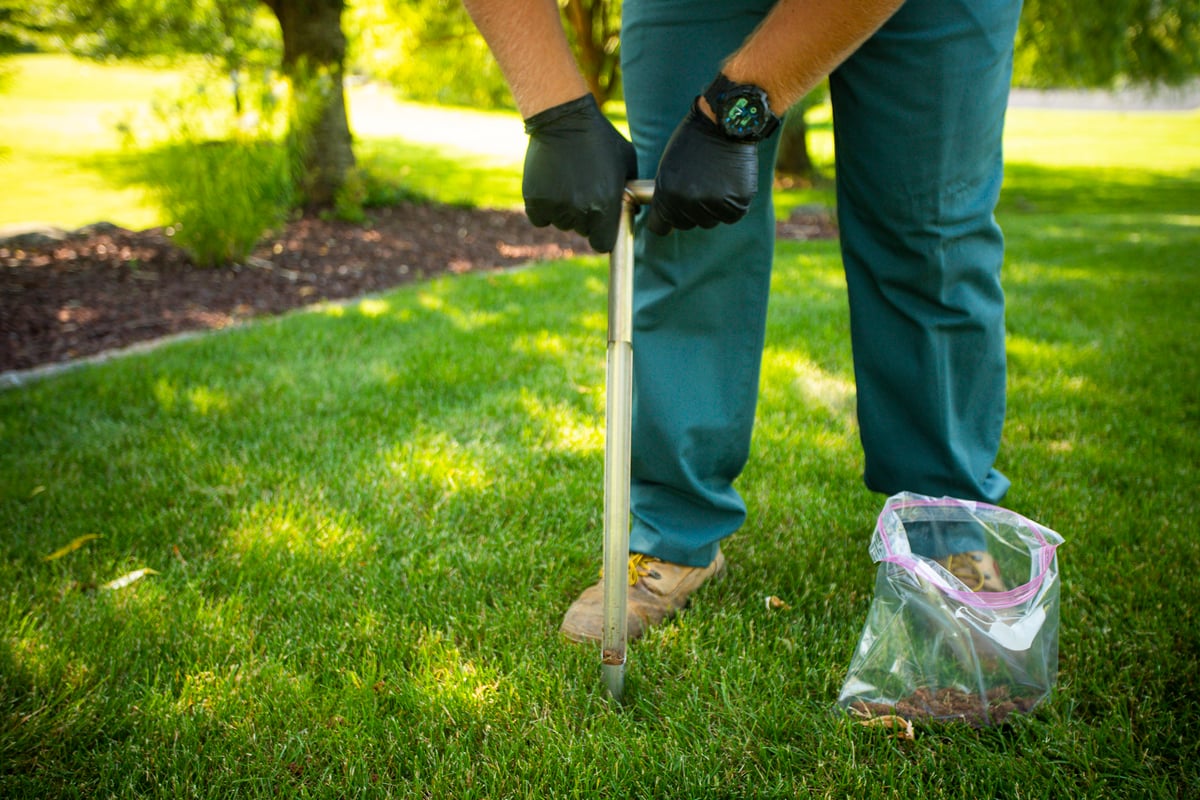
A lawn soil test is performed with the use of a small soil probe, which pulls approximately 10 to 15 cores of soil throughout your yard. Those cores are then sent to a lab where they will be analyzed for various elements including the lawn soil pH and the number of nutrients that your lawn has.
Fixing Lawn Soil
Soil health issues can definitely be at the heart of greater lawn problems.
For example, should it be revealed that your lawn has too little phosphorus, then your lawn’s roots are going to struggle. Should it be determined you have too little potassium, your lawn will be more prone to environmental stressors. It’s important that your lawn’s nutrients are in balance.
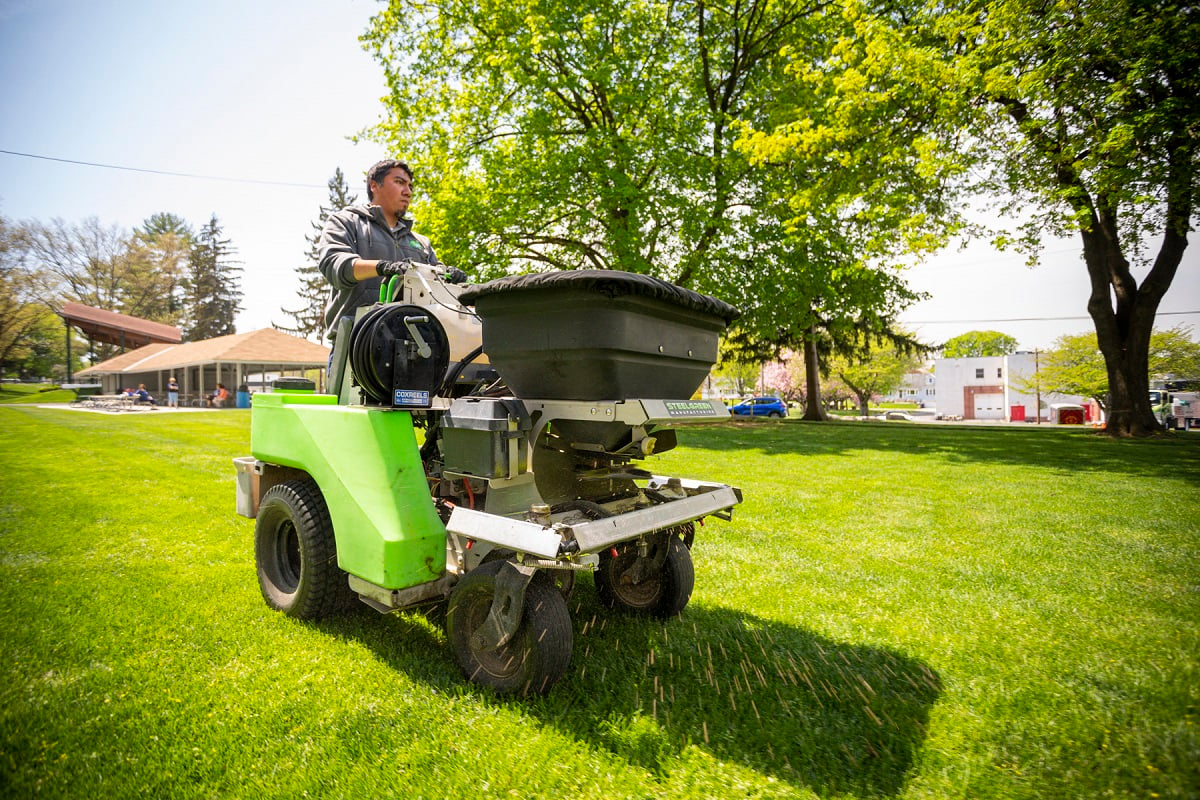
Once you have this information, you can begin making corrections. This is true for lawn soil pH, as well.
You also want your lawn’s pH to be at the proper level in order to encourage an environment where your grass will thrive (and weeds will not). If it turns out your lawn’s soil is too acidic, as many are, then this can be remedied with a limestone treatment.
How to Get Rid of Lawn Pests
Lawn insects such as chinch bugs and grubs are more than just a nuisance. They’re a destructive force that can pose a real threat to your healthy lawn. Though small, these pests have the ability to destroy a beautiful lawn in little to no time if given the chance.
As with other lawn problems we’ve talked about so far, before you can correct an issue with lawn insects, you must figure out what you’re dealing with.
Common Lawn Pests
There are two primary categories of lawn pests that plague lawns: Surface-feeding insects and sub-surface feeding insects. Let’s look at both.
Sub-Surface Lawn Insects
Lawn grubs are a common sub-surface pest. Grubs are white, C-shaped pests that are actually the larvae of certain beetles, Japanese Beetles being the most recognized. In order to understand how destructive grubs can be, you must understand their life cycle.
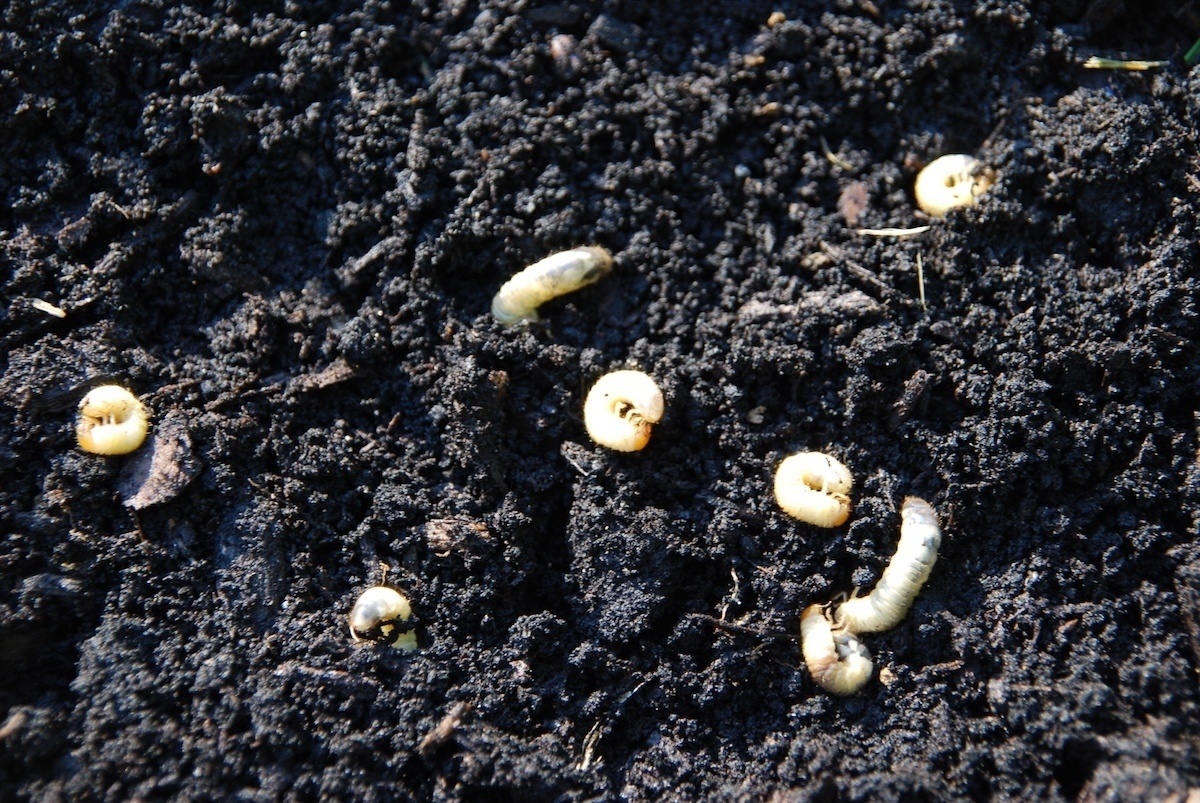
Beetles lay their eggs in mid-summer. When the grubs hatch in the soil, they begin feeding on the roots of your lawn in mid-August.
The effects of this damage can happen fast. As grubs consume your lawn roots it will get to the point where you’ll be able to roll up your dead turf like a carpet.
Surface-Feeding Lawn Insects
Two of the most common surface-feeding lawn insects that we see in Pennsylvania are chinch bugs and sod webworms.
Chinch bugs have a blackish-gray body and white wings. Of course, considering the fact that an adult chinch bug is only around ⅙-inch long, you might spot chinch bug damage before ever seeing one of these pests. Chinch bugs actually munch on grass, which can lead to brown spots.
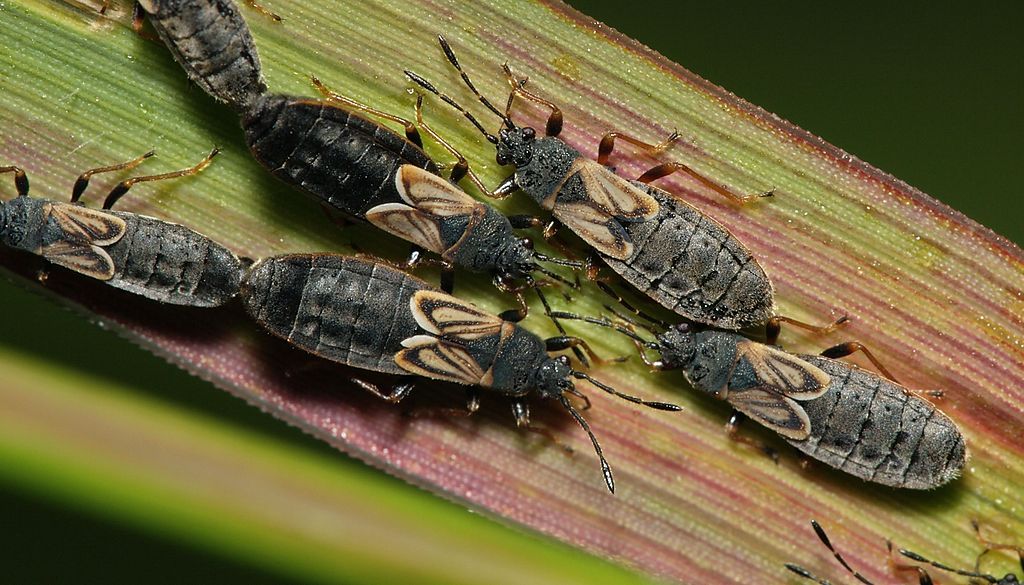
Sod webworms also eat grass at the surface level. There are several species of sod webworms, also known as “lawn moths,” that infest lawns.
Adult sod webworms are dull-colored moths and can reach a ¾ inch in size. The adult is characterized by a pair of projections on the head, resembling a snout.
Killing Lawn Insects
Once you figure out which pest you’re dealing with, you can implement a solution.
Because lawn grubs are so aggressive and can destroy your lawn so quickly, preventative grub control is imperative.
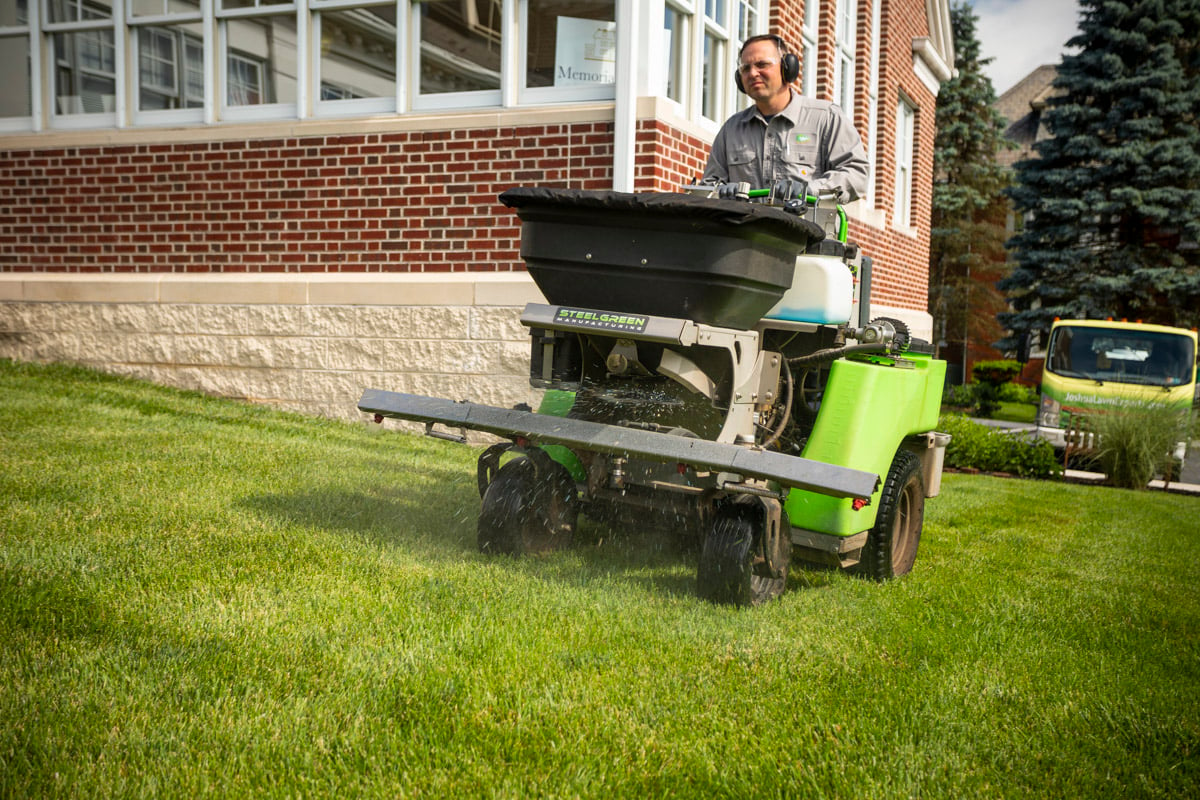
Preventative products work by taking care of young grubs as they hatch. Preventative grub control lasts all season but the application timing is important. We typically try to get preventative products down by mid-July.
If it gets too late (around August) the product will not be effective on older grubs and we will need to switch to a curative product.
With surface-feeding insects, curative products can be used if a problem is spotted. It always helps to be on the lookout for lawn problems so that solutions can be implemented quickly.
Dealing with Lawn Fungus
Lawn diseases can pose a serious threat to the health of your lawn as well. As with any lawn problem, it all starts with identification. Here are six of the most common lawn diseases.
- Brown Patch: This lawn disease presents as large brown/gray discolorations throughout the lawn. It is often caused by high temperatures and humidity or by over-fertilization.
- Red Thread: True to its name, a lawn stricken with this fungal disease will appear to have reddish threads throughout the lawn. Red Thread lawn disease can be made worse by poor drainage, compaction, or overall unhealthy soil. It thrives in wet conditions.
- Dollar Spot: Just as you might expect, this disease presents with spots throughout the lawn, roughly the size of silver dollars. Dollar spot can occur any time from early to late summer, though the disease usually peaks with high temperatures and humidity.
- Leaf Spot: This disease presents with the spotting of individual blades of grass. As it worsens, this disease can go through a process called “melting out” during which the crown and roots are damaged, leading to severe thinning of the turf. Lawns that are mowed too short and high humidity can be causes of this unsightly disease.
- Pythium Blight: This disease first appears as small, irregularly shaped spots. Pythium Blight patches look light brown or gray in color and spread very rapidly in lawns, causing permanent damage to grass plants.
- Snow Mold: Snow mold is pretty much exactly what its name says. It is mold that is found underneath the snow. As far as how to identify snow mold, it’s something that you would see in the early spring, as the snow clears.
Lawn Disease Control
As far as implementing lawn disease treatment, the key is early detection. When caught early or treated for on a preventative basis, lawn diseases can typically be treated without major damage.
But if left to fester, they can wreak havoc, demanding extensive seeding to be done in the fall.
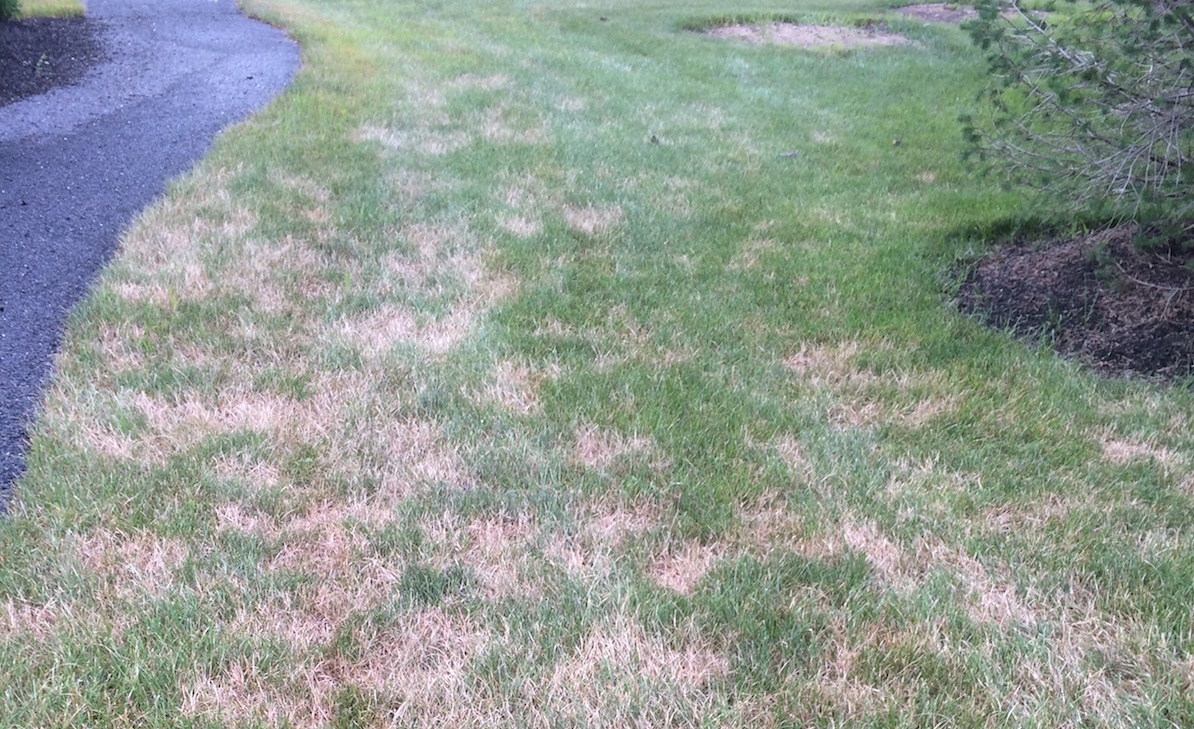
Sometimes, a lawn disease problem will even take care of itself. Snow mold can often be raked out and as soon as the lawn starts getting more air, it will begin to clear up.
It’s important to note that good lawn care practices that promote healthy soil and a thick lawn are natural preventative measures against disease. However, there are some lawn disease issues that are difficult to prevent and predict.
Lawn Aeration and Overseeding
A lawn aeration service, which is the process of making holes throughout your lawn by pulling small soil plugs (called “cores”) is one of the most important services for your lawn. If your lawn has bare spots, lawn aeration with overseeding is one of the best ways to fill them in.
With the help of a special machine called a core aerator, the creation of these holes allows more oxygen, water, and nutrients to penetrate deep into the soil and down to your turf’s root zone, where it’s truly needed.
This will allow your lawn to establish healthy roots and truly thrive.
Lawn Aeration Benefits
Here are some of the reasons that you should consider a lawn aeration service.
- Reduced Soil Compaction: Clay-like soil can become easily compacted. But lawn aeration helps break up clay soil. That’s important because compacted soil does not allow for proper infiltration of oxygen, water, and nutrients.
- Breaking Up Thatch: The naturally-occurring, dead organic material that can build atop your soil is called “thatch,” and it’s a common concern in many lawns. That’s because thatch build-up can create a layer that makes it difficult for oxygen, water, or nutrients to get through. Excessive thatch can also make your lawn more prone to disease or pests. But aeration will help thatch to breakdown more easily.
- Better Seed-to-Soil Contact: Lawn aeration can also provide the optimal seed-to-soil contact that is needed for germination to occur. Overseeding your lawn should be performed at the same time as a lawn aeration service for this very reason.
Overseeding Your Lawn
Seeding a valuable service that even healthy lawns can benefit from. That’s because seeding can help improve your lawn’s overall health as well as boost its aesthetic appeal.
Seeding is going to be most successful when conditions are right. Temperature-wise, seeding is best performed in fall. The warm soil and cool air provide the ideal growing conditions for new seedlings to germinate.
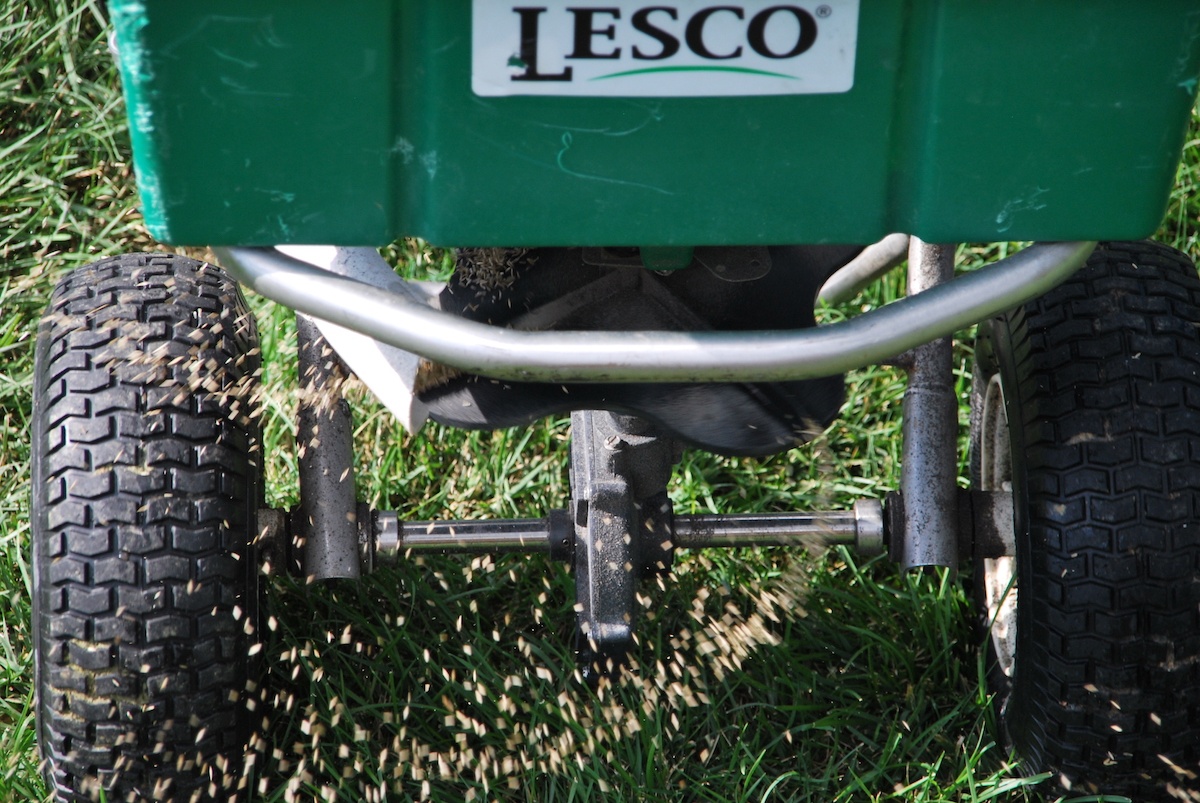
Good seeding results are also reliant on loosened soil so that seedlings can root in. This is why it’s ideal to have lawn seeding performed at the same time as lawn aeration. The holes created by the core aerator provide excellent seed-to-soil contact.
Though some homeowners attempt to seed on their own, it is beneficial to use a professional service for lawn seeding. Not only will a professional have access to a professional-grade core aerator to perform the aeration service, but they will also have better access to high-quality, professional-grade seed.
The best lawn seed for many lawns is Turf Type Tall Fescue, which has been determined to work well with soil conditions in many lawns.
Choosing a Lawn Care Service
As you’ve read through this lawn care guide, you may have found yourself wondering how you can tackle all of these services on your own. Fortunately, you don’t have to. Instead, you can hand these tasks over to a pro.
Of course, with a lot of different lawn service companies out there, how can you know which one to choose? Let’s talk about how to narrow your options.
Do Your Research
Although it can be time-consuming to perform research, that is the best way to narrow down your choices of lawn care companies and find the one that is best for you.

As far as where to start that research, we are fortunate to have the Internet at our fingertips. But you have to still be careful in your search. A lot of people turn to third-party sites to find lawn care but you need to understand how these work. These lead-generating sites typically allow lawn service companies to get leads when they advertise.
Third-party sites can be a great way to come up with a list of lawn care companies, but then you should still perform your own research such as going to their websites.
Look at Lawn Care Programs
You’ll obviously also want to look at the lawn care programs offered by various lawn service companies. When comparing lawn care programs, what you really need to evaluate is what’s included.
In order to do that fairly, you could create a two column list on a tablet where you compare (side-by-side) the treatments each company has to offer.
Don’t Shop on Price
Finally, we want to offer a word of caution that you should avoid shopping on price. You obviously want affordable lawn care, but you also want to get amazing results.
Lawn service cost is one factor to consider but it shouldn’t be the only consideration. Sometimes there are good reasons why a company might cost a little bit more.
Ultimately, you want to look at what value you get out of your investment.
We’re Here to Help
At Joshua Tree Experts, we are here to help however you may need us. We know that lawn care can be confusing but we are here to answer any questions that you may have. We also have lawn care programs and services that can meet a variety of your needs. By choosing Joshua Tree, we can help put your lawn care worries to rest.
With the right care for your lawn, you’ll gain valuable peace of mind. If you’re interested in having your lawn inspected and its health assured, contact us for a free consultation or give us a call at 833-JTE-TREE.
Image Source: lawn mower, chinch bugs




